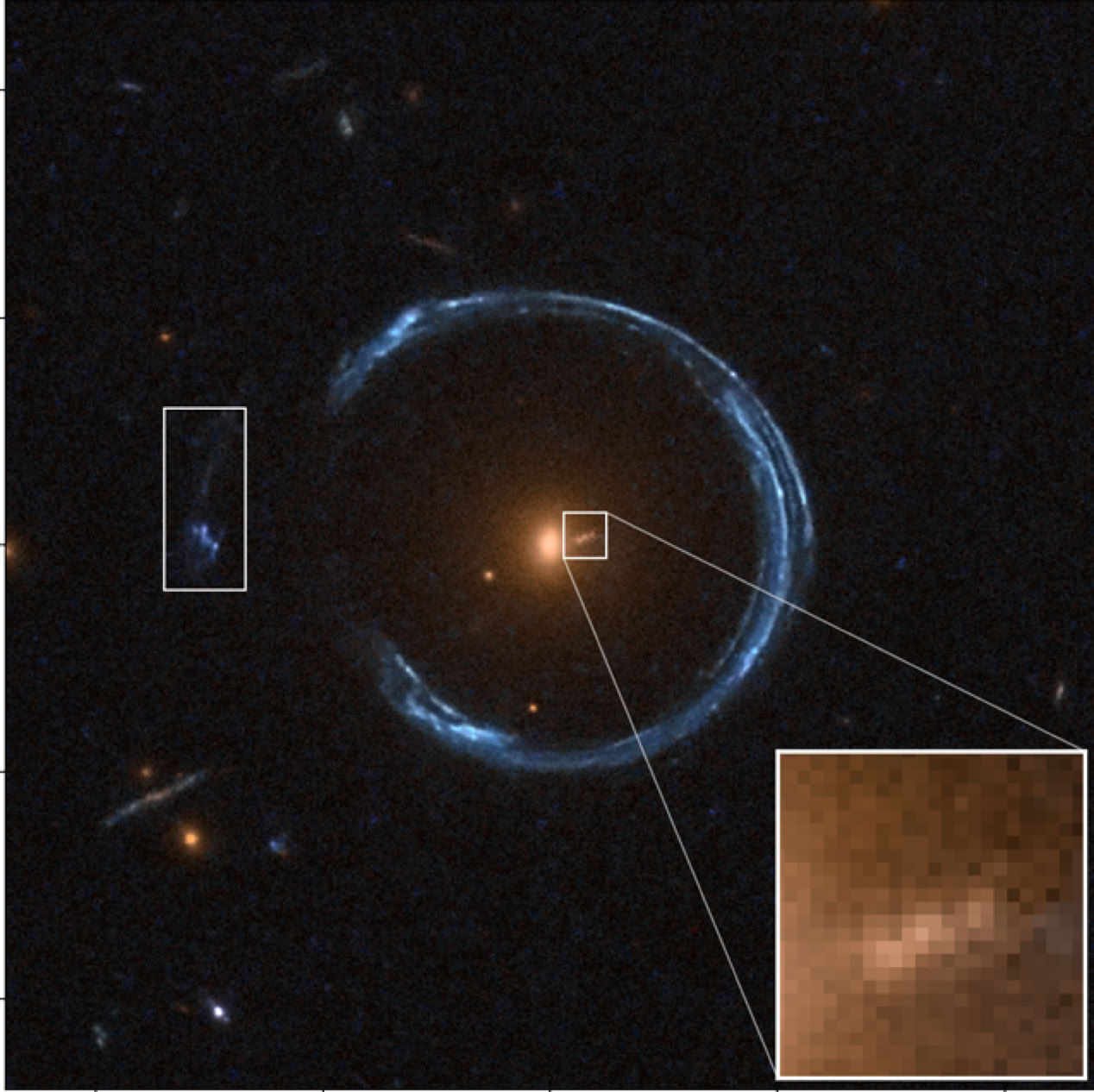by George Cristache, PhD student

Horseshoe galaxy
Ultramassive black holes are true cosmic giants, with masses on the order of tens of billions of solar masses. Like any self-respecting supermassive black hole, they reside at the centers of galaxies (far more massive than the Milky Way) and act both as a galactic anchor and as a “cosmic furnace.” Through the dynamics of the accretion disk, they regulate the pace, rate, and number of stars that will form within the host galaxy.
But why should we study ultramassive black holes? Aren’t they simply heavier versions of supermassive black holes? In fact, the transition from “supermassive” to “ultramassive” challenges our current models of black hole formation, with profound implications for galaxy dynamics and evolution. A striking example was recently identified in the binary galaxy system known as the Cosmic Horseshoe, investigated by Carlos Melo-Carneiro and collaborators. The massive galaxy at the center of the image warps the fabric of spacetime, bending the light of its lighter companion galaxy and producing an optical illusion in which the latter appears shaped like a horseshoe. This gravitational lensing effect provides an indirect method of estimating the mass of a black hole, though it typically allows for significant uncertainties. To improve precision, Melo-Carneiro and his team complemented this method with spectroscopic measurements obtained using images from the Hubble Space Telescope, ultimately arriving at a remarkable mass determination: 36 billion solar masses.
Current theoretical estimates suggest that the upper limit for a black hole’s mass is around 50 billion solar masses. This limit arises because, as a black hole accretes matter, the infalling material forms a gaseous envelope in the form of an accretion disk. When accretion occurs rapidly, particles within the disk are heated and emit radiation. The resulting radiation pressure counteracts the intense gravitational pull, thereby imposing a limit on how quickly and how much matter a black hole can absorb.
Of course, the quasar TON 618 was initially estimated to harbor a black hole of 66 billion solar masses, but more refined measurements of stellar dynamics around it have reduced that estimate to less than 40 billion solar masses.
On one hand, the extreme mass of the black hole in the Cosmic Horseshoe system can be explained by the fact that it is a “fossil galaxy”, formed through the successive mergers of galaxies within a cluster, and therefore through the merging of their central black holes. On the other hand, the ratio between the black hole’s mass and that of its host galaxy is about 1.5 times higher than the average expected for such binary systems. A conventional explanation is that, during the parent cluster’s black hole mergers, the high-energy interactions ejected a large amount of matter from the system. Yet researchers do not rule out the possibility that the evolution of ultramassive black holes involves still-unknown mechanisms.
Thus, by studying these ultramassive black holes, we may be able to shed light on the mysteries surrounding the origin and evolution of these extraordinary cosmic entities.
Source: https://doi.org/10.1093/mnras/staf1036